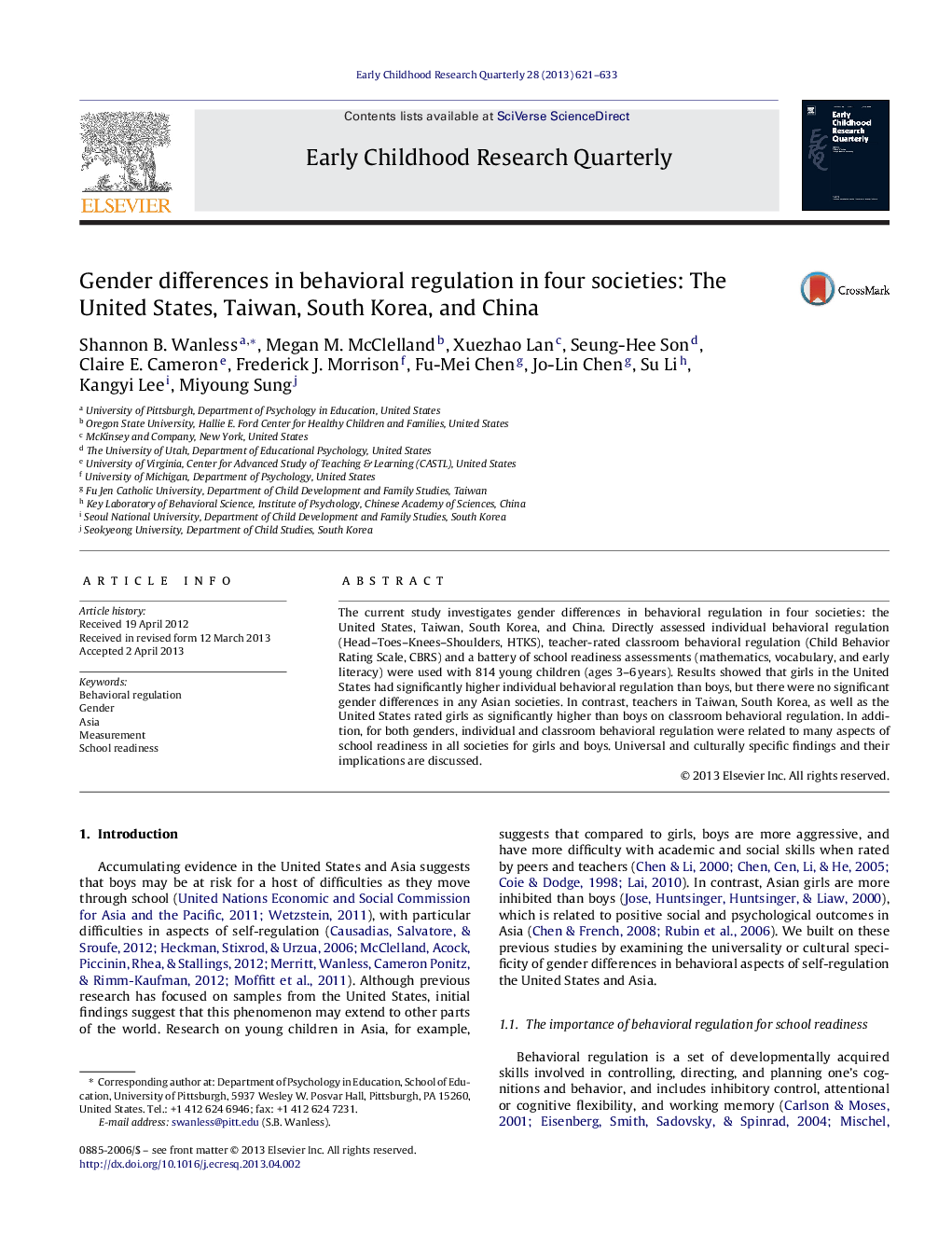| کد مقاله | کد نشریه | سال انتشار | مقاله انگلیسی | نسخه تمام متن |
|---|---|---|---|---|
| 353955 | 618955 | 2013 | 13 صفحه PDF | دانلود رایگان |

• Girls universally had higher teacher-rated classroom behavioral regulation than boys.
• For directly assessed regulation, Asian girls did not have an advantage over boys.
• The relation between regulation and school readiness had no gender differences.
The current study investigates gender differences in behavioral regulation in four societies: the United States, Taiwan, South Korea, and China. Directly assessed individual behavioral regulation (Head–Toes–Knees–Shoulders, HTKS), teacher-rated classroom behavioral regulation (Child Behavior Rating Scale, CBRS) and a battery of school readiness assessments (mathematics, vocabulary, and early literacy) were used with 814 young children (ages 3–6 years). Results showed that girls in the United States had significantly higher individual behavioral regulation than boys, but there were no significant gender differences in any Asian societies. In contrast, teachers in Taiwan, South Korea, as well as the United States rated girls as significantly higher than boys on classroom behavioral regulation. In addition, for both genders, individual and classroom behavioral regulation were related to many aspects of school readiness in all societies for girls and boys. Universal and culturally specific findings and their implications are discussed.
Journal: Early Childhood Research Quarterly - Volume 28, Issue 3, 3rd Quarter 2013, Pages 621–633